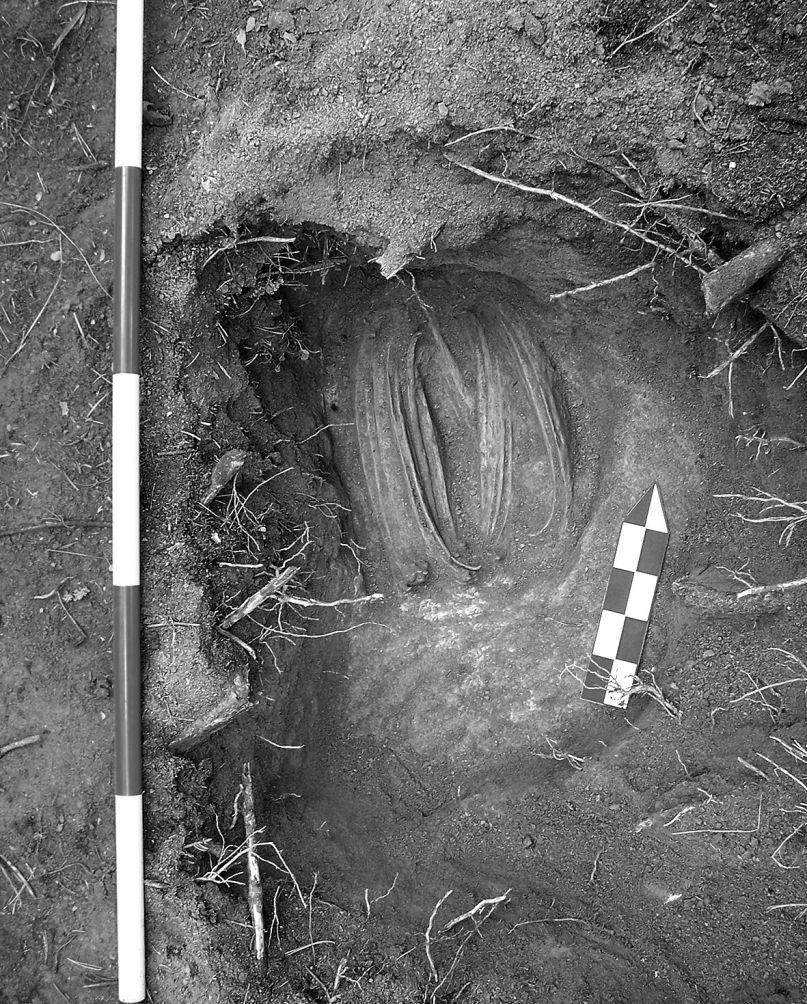On the issue of rib hoards from an Early Bronze Age settlement context
the hoard from Kučeř in south Bohemia from the perspective of archaeology and archaeobotany
DOI:
https://doi.org/10.35686/AR.2018.8Keywords:
rib hoard, Bronze Age, flatland settlement, archaeobotanical analyses, radiocarbon dating, south BohemiaAbstract
Thanks to a professionally documented find context, a hoard of ribs discovered in 2012 in Kučeř in the Písek region (Czech Republic) allowed several important questions to be raised. Besides a typological analysis of artefacts from the hoard in a context in which individual ribs were divided into a total of four groups, archaeobotanical analyses and radiocarbon dating were also performed. One important question is the relationship between the hoard and the settlement whose existence was confirmed in several small trenches, making it possible to analyse the relationship between Early Bronze Age mass finds and contemporary flatland settlements in the broader territory of eastern Europe. Palynological analysis and an analysis of plant macro-remains allow for thought on the character of human activities in the settlement area. A comparison of archaeobotanical and radiocarbon data from the hoard and the occupation layer then enable deliberation on the mutual relationship between these two components.
Downloads












